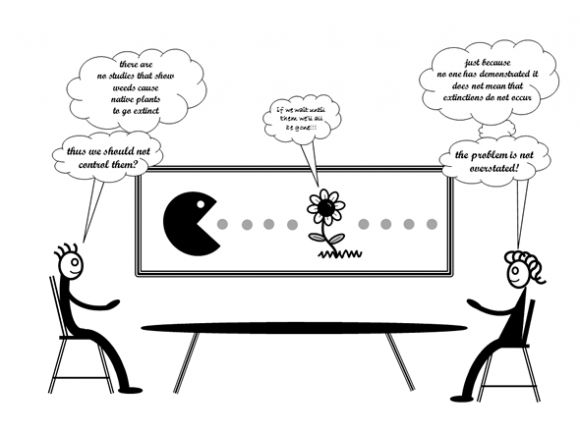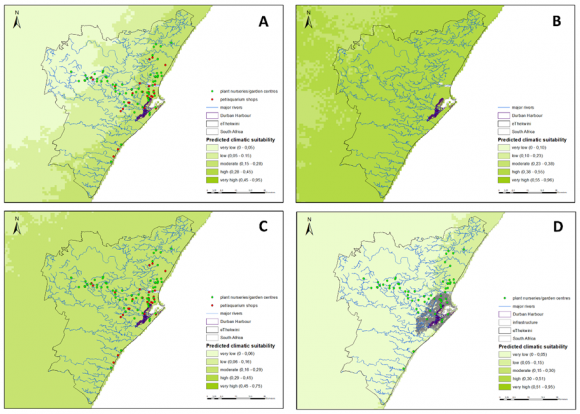26 April 2016 | By Cang Hui
A recent paper by a group of researchers, led by C·I·B core team member Prof Cang Hui, proposed a framework to help explain why some invasive alien species are so successful in invading the new areas, while it is not so easy for others.
The success of an organism to become invasive and the impacts of the invasion depend on the potential of the species itself (also called the invasiveness) and on the susceptibility of the ecosystem (invasibility) they invade. Yet, the two concepts are not defined under a common framework.
In their paper, Prof Hui and colleagues used invasion fitness as a common framework for their definition. The invasion fitness of a species is a measure of the invading potential of a species and depends both on the phenotypic traits of the invading species and those of the species that exist in the ecosystem they invade. Phenotypic traits are observable traits for example body size, competitive ability, life-history and foraging strategies, etc.
Invasiveness and invisibility are not easy to be empirically measured or quantified. However, they are shown to be correlated with the stability and structure properties of the invaded ecosystem. Such metrics are easily computed from the interaction network of the invaded ecosystem, being it measured through field experiments or guessed through expert opinion, thus providing an estimate of invasiveness and invasibility.
In their paper, Prof Hui and colleagues demonstrated the framework using both a theoretical model of a food-web ecosystem and observed interaction networks before and after the invasion of the harlequin ladybird (Harmonia axyridis) in agricultural and forest landscapes.
“Information on invasiveness and invasibility can be useful for the prevention and management of invasions by alien species, and can play a crucial role in the conservation of endemic biodiversity and ecosystem services” according to Dr Pietro Landi, co-author of the paper published in a special issue of the journal, Biological Invasions.
This paper had its origin at a workshop on ‘‘Drivers, impacts, mechanisms and adaptation in insect invasions’’ hosted by the DST-NRF Centre of Excellence for Invasion Biology in November 2014 (Click here to read more about the workshop)
Discussions at the workshop led to a special issue in the journal Biological Invasions. The special issue is available as the April 2016 volume of Biological Invasions (View the Biological Invasions special issue articles here)
Click here to the read the paper by Hui et al.
For more information, contact Prof Cang Hui at chui@sun.ac.za




